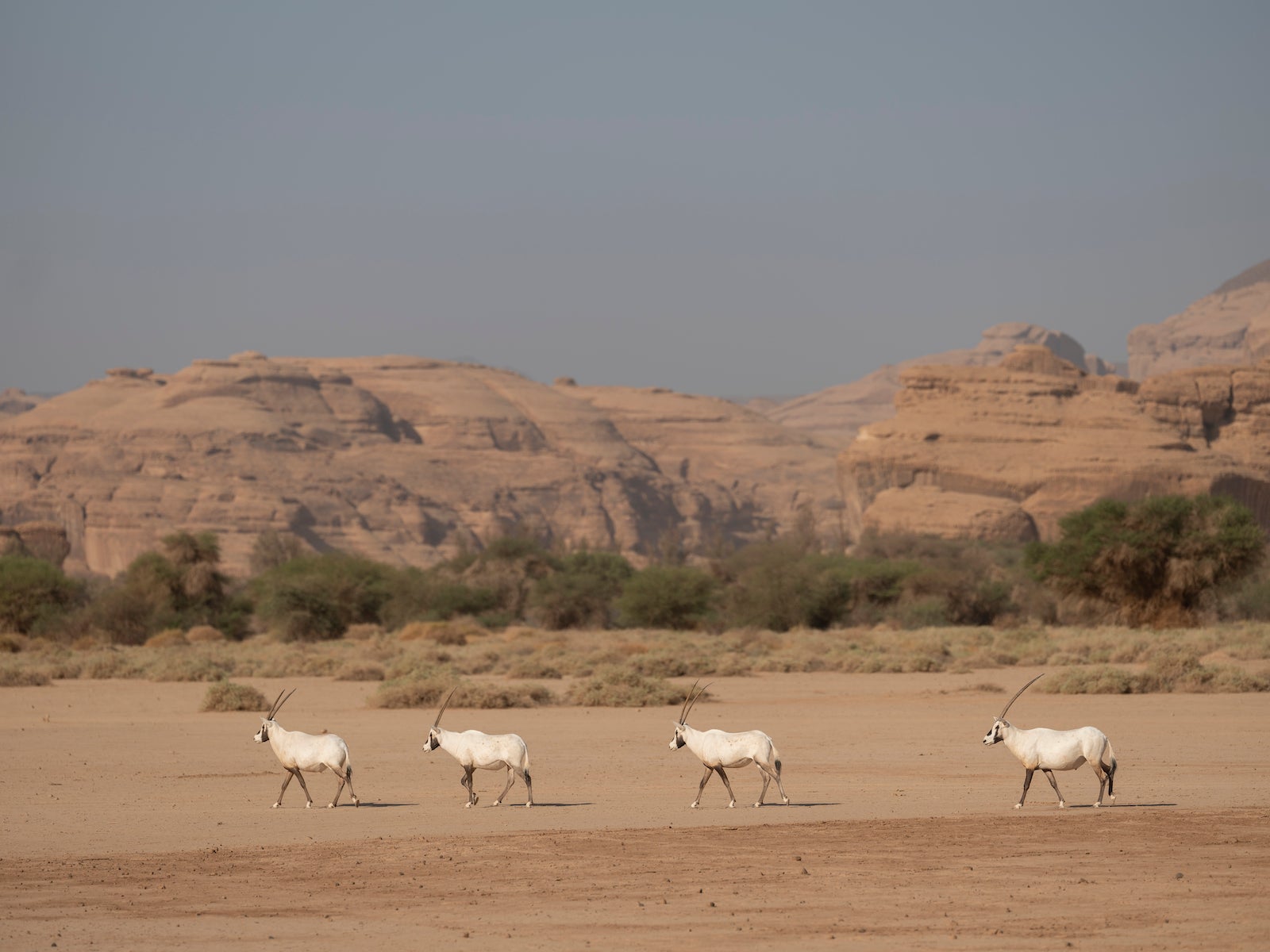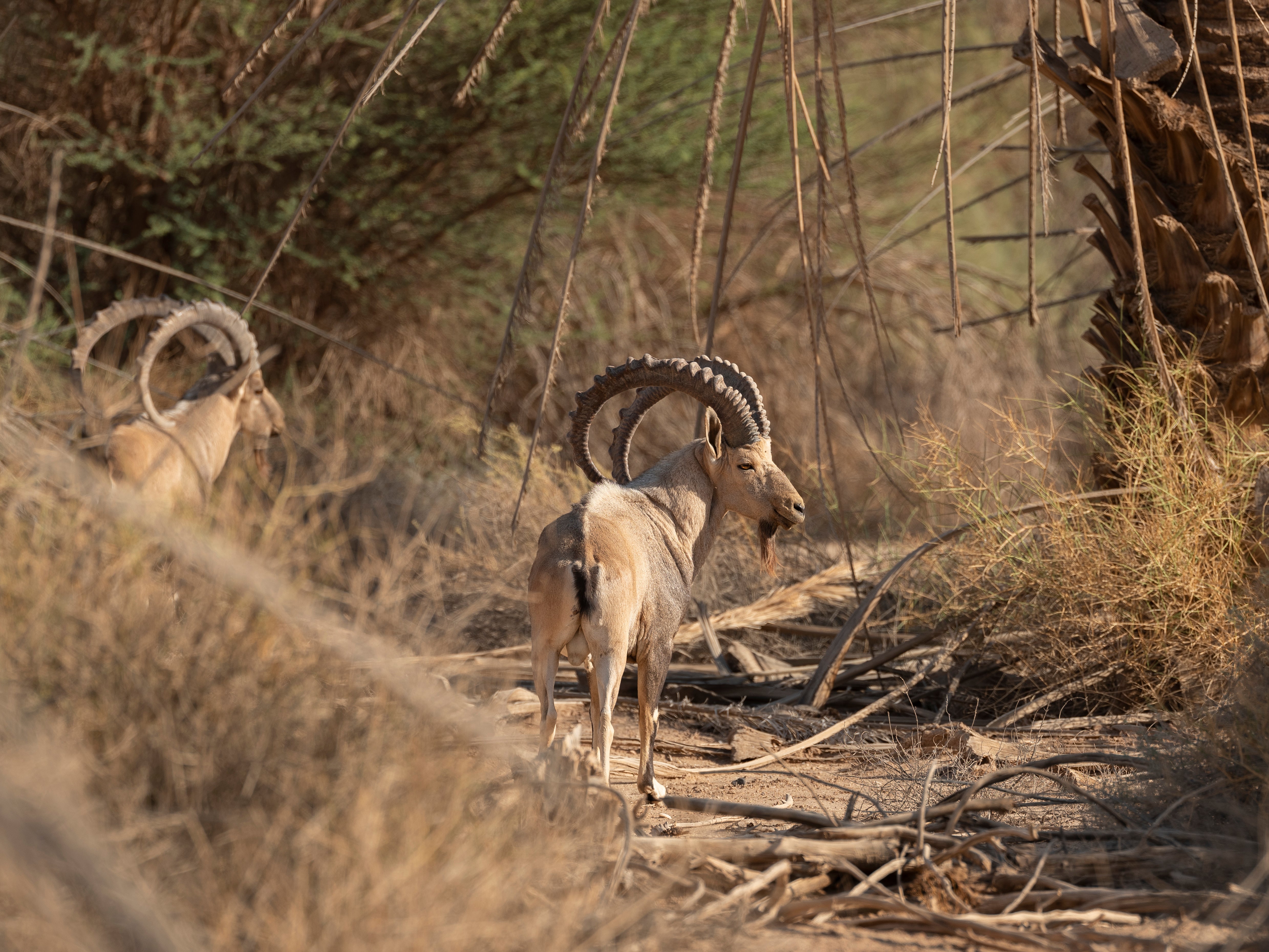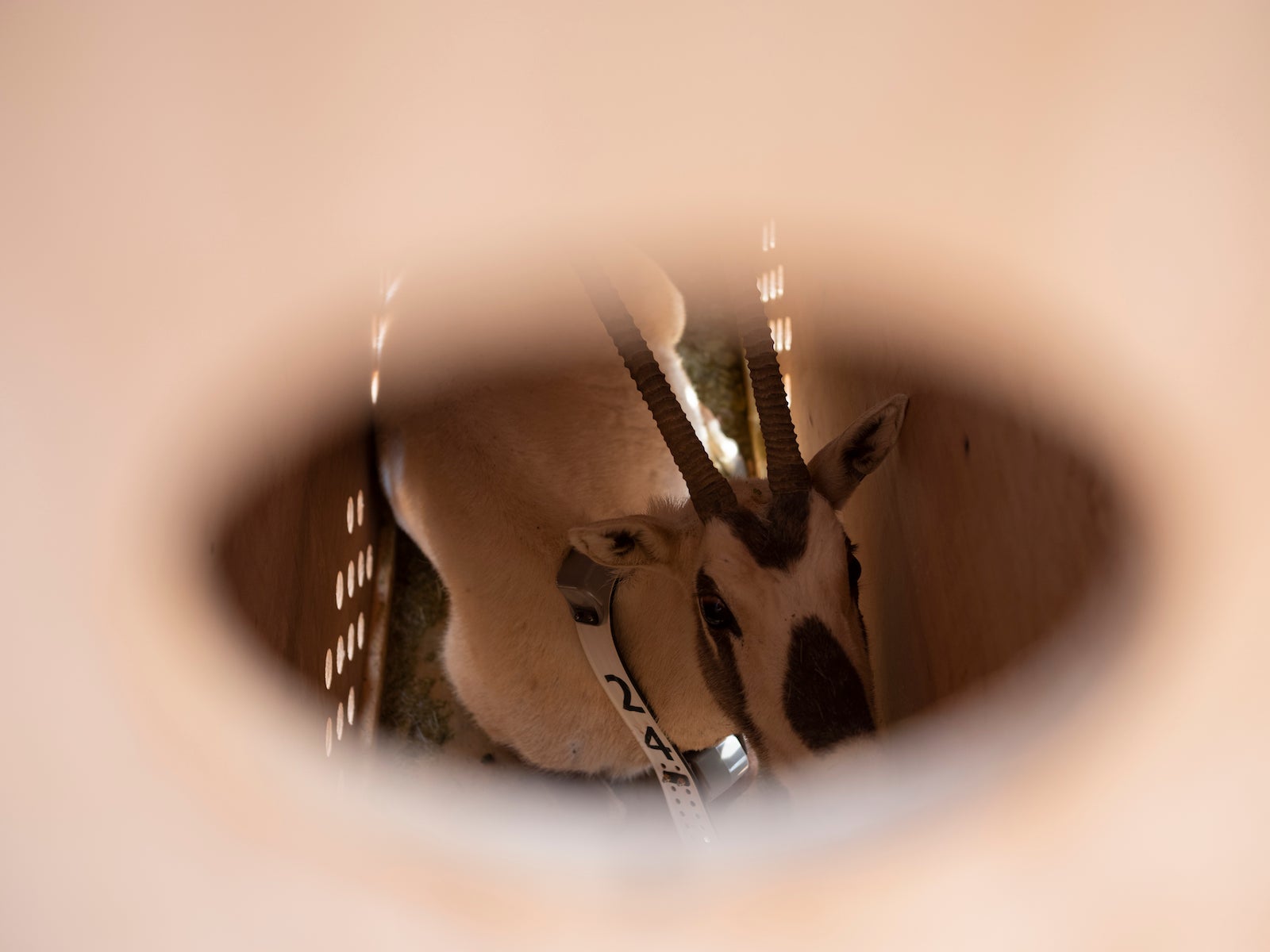They have survived. Now will they thrive? Return of the Arabian oryx
As another mass release of captive animals takes place in the Arabia desert, we look at the evidence that native species are adapting to their ancient homeland

November in the Arabian desert. It’s a time of excitement and stirring.
If the rains are going to arrive at all, it’s now. Nature is waiting for the precious showers and storms and the flourishing of grasses, herbs and trees that follows.
If you are going to release captive animals into the wild, November is a good month to do it.
In AlUla, an area of extraordinary natural beauty and human heritage in north west Saudi Arabia, they are preparing for their biggest wildlife release yet.
In the past century, Arabia has seen a catastrophic decline in the native species that found a home in this seemingly uninhabitable land.

The grazing species, sand gazelles, Nubian ibex and Arabian oryx, have not been able to compete with the growing herds of domesticated camels and goats. Overgrazed areas turned to desert. As for the charismatic predators that once roamed from Anatolia to Yemen, they have been hunted and poisoned to near extinction – extremely near extinction, in the case of the Arabian leopard.
Cautiously, at the rate of perhaps 100 or so a year, birds and mammals bred in captivity have been reintroduced to the land.
This year, the target is at least 1,000.
Two factors are driving this accelerated activity and sudden increase in ambition.
The first is the Saudi Green Initiative, a £1.65bn billion rewilding and regeneration programme whose scope and ambition has few, if any, parallels in the world today.
The second is the evidence from previous captive animal releases.
The AlUla wildlife and natural heritage conservation teams have been releasing ibex, oryx and gazelles, as well as ostrich into their 22,500 square kilometres of canyons, ravines, wadis, valleys and open desert.
Dr Stephen Browne, Wildlife and Natural Heritage Executive Director at The Royal Commission for AlUla , says “there is a good indication they have survived, bred and held their own.”
The offspring of the released animals are now breeding themselves. That’s an emotional moment for the conservation teams. Those youngsters are now wild animals.
How do we know? The AlUla programme has some of the most advanced tracking technology in the world. They know if animals are running, walking, sleeping; and where they choose to feed and seek shelter. If an animal dies or is killed, the researchers are alerted. Heavy tracking devices are being replaced with solar powered and, in the near future, LoRa (Low power, Wide area) trackers.

But those alerts that an animal has been lost are far fewer than might have been expected.
While it is some years before the ungulates’ natural predators, hyenas, cheetahs and leopards will be released, Arabian wolves and red foxes have resisted mankind’s attempts to expunge them from the land.
Browne says that weaker, older and ‘more naive’ animals may fall victim to those predators. The survivors and the information they beam up into space tells a remarkable story.
Animals bred in compounds are travelling huge distances as they scope out their new and vast home. Then they settle. They are then transforming our knowledge of the land they now inhabit.
“We couldn’t understand why they were gathering in certain places,” says Dr Browne. “It turned out they had found waterholes we didn’t know existed”.
“These animals have been in captivity all their lives. In a completely alien landscape a thousand kilometres from where they were born, they found water.”
The race is now on to release more animals – from centres in other Gulf states and private owners. But the grazing species will give birth to twins and sometimes even triplets every eight months in good years.
For the increasing numbers of visitors looking to go on safari in this ancient and majestic land, the sight of the Arab world’s most emblematic species in the wild is becoming a real prospect again.
Find out more about the MGI summit and SGI forum here: greeninitiatives.gov.sa

Bookmark popover
Removed from bookmarks